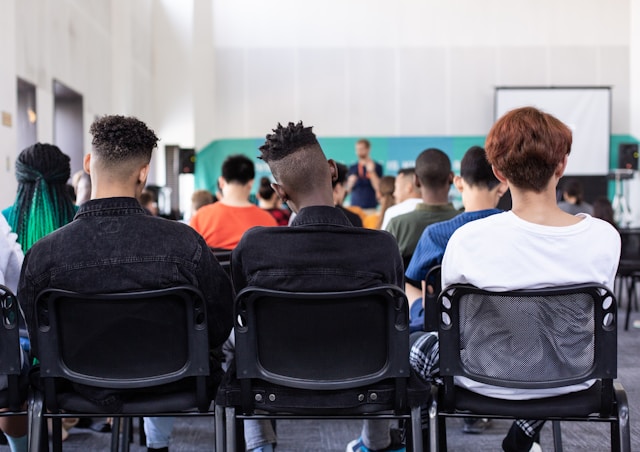The Impact of Social Media on Student Engagement and Learning
In the era of digital connectivity, social media platforms have become an integral part of our daily lives. From keeping in touch with friends and family to sharing personal experiences, consuming news, and engaging with brands, social media has revolutionized the way we communicate and interact with the world around us.
The impact of social media has extended far beyond personal and social realms, permeating various industries and sectors, including education. As technology continues to shape the landscape of teaching and learning, educational institutions have recognized the potential of social media as a powerful tool to enhance student engagement, collaboration, and overall learning experiences.
Social media platforms offer a dynamic and interactive environment that aligns with the digital native mindset of today’s students. By leveraging the familiarity and appeal of these platforms, educators can create engaging learning experiences that resonate with students’ interests and communication preferences. Social media provides opportunities for seamless information sharing, collaborative learning, and real-time interactions, fostering a more participatory and inclusive educational experience.
However, the integration of social media in education is not without its challenges. Concerns surrounding privacy, distraction, and the credibility of information shared on these platforms have sparked debates among educators, parents, and policymakers. Striking the right balance between leveraging the benefits of social media and addressing its potential drawbacks is crucial for its effective implementation in educational settings.
Social Media in the Classroom
The integration of social media into educational curricula has taken various forms, with educators leveraging different platforms to enhance student engagement, collaboration, and learning experiences. Some of the most commonly used social media platforms in educational settings include:
- Facebook: With its vast user base and robust features, Facebook has become a popular choice for creating virtual classrooms, discussion groups, and facilitating peer-to-peer interactions. Educators can use Facebook groups to share course materials, initiate discussions, and foster a sense of community among students.
- Twitter: The microblogging platform’s real-time nature and hashtag functionality make it an ideal tool for conducting live discussions, sharing educational resources, and encouraging students to engage with current events and trends relevant to their studies.
- Instagram: As a highly visual platform, Instagram offers opportunities for students to showcase their creative work, share educational content through visuals and reels videos, and engage in discussions through comments and direct messages. The platform’s popularity among younger generations makes it an appealing choice for enhancing learning experiences.
- YouTube: Video-sharing platforms like YouTube provide a wealth of educational content, ranging from instructional videos to documentaries and lectures. Educators can leverage these resources to supplement traditional teaching methods and encourage students to create and share their own video projects.
These platforms, among others, are being used in classrooms to facilitate discussions, share educational resources, promote collaboration, and foster student-teacher and peer-to-peer interactions. The integration of social media aims to create a more dynamic and engaging learning environment that aligns with the digital native mindset of today’s students.
However, the effective use of social media in educational settings requires careful planning, implementation, and monitoring. Educators must establish clear guidelines and policies to ensure responsible and productive use of these platforms, while also addressing potential challenges such as privacy concerns, credibility of information, and digital divide issues.
Pros of Integrating Social Media in Education
The integration of social media into educational curricula offers a range of potential benefits for enhancing student engagement, collaboration, and overall learning experiences. Some of the key advantages include:
- Increased Student Engagement and Participation: Social media platforms provide a familiar and interactive environment for students, fostering increased engagement and participation in learning activities. By leveraging the features and functionalities that students are already accustomed to, educators can create more compelling and relatable learning experiences.
- Opportunities for Interactive and Collaborative Learning: Social media platforms facilitate real-time interactions, enabling students to engage in collaborative learning activities, such as group discussions, peer feedback, and co-creation of content. This collaborative approach fosters critical thinking, communication skills, and a deeper understanding of course material.
- Access to a Vast Pool of Educational Resources: Social media platforms serve as gateways to a vast array of educational resources, including articles, videos, podcasts, and multimedia content shared by educators, researchers, and subject matter experts from around the world. This exposure to diverse perspectives and resources can enrich the learning experience and broaden students’ knowledge horizons.
- Developing Digital Literacy and Social Media Skills: As social media becomes increasingly prevalent in various aspects of life, integrating it into education helps students develop essential digital literacy and social media skills. These skills are valuable not only for academic pursuits but also for future career success in an increasingly digital workforce.
- Promoting Student-Teacher and Peer-to-Peer Interactions: Social media platforms facilitate open communication channels between students and teachers, as well as among peers. This increased interaction can foster a stronger sense of community, encourage collaborative learning, and provide opportunities for timely feedback and support.
The Role of Instagram Likes and Comments
Instagram, with its visual-centric approach and widespread popularity among younger generations, has emerged as a powerful platform for sharing and engagement in educational settings. While the platform offers a range of features that can enhance learning experiences, the aspects of likes and comments warrant particular attention due to their potential impact on student motivation, self-esteem, and overall engagement.
As a highly visual platform, Instagram encourages users to share photographs, videos, and other multimedia content, making it an ideal choice for projects that involve creative expression, storytelling, and visual communication. However, beyond content sharing, the platform’s like and comment functions play a significant role in shaping the user experience and interactions.
The Impact of Likes and Comments on Student Motivation and Self-Esteem
In an educational context, the likes and comments received on student-created content can have a profound effect on their motivation and self-esteem. Positive feedback and recognition from peers and educators can foster a sense of accomplishment and encourage further engagement with the learning material. Conversely, a lack of likes or critical comments may demotivate students, potentially impacting their confidence and willingness to participate.
Opportunities for Peer Feedback and Recognition
Instagram’s comment feature provides a space for peers and educators to offer constructive feedback, suggestions, and recognition for student work. This collaborative aspect can foster a supportive learning environment, where students receive valuable insights and encouragement from their classmates and instructors. Additionally, the ability to engage in discussions through comments can deepen understanding and facilitate knowledge sharing.
Potential Negative Effects of Excessive Focus on Likes and Validation
While likes and comments can positively influence student motivation and engagement, an excessive focus on these metrics can also have detrimental effects. An unhealthy obsession with garnering likes and validation from others may lead to distorted self-perceptions, unhealthy social comparisons, and even mental health issues. Students may prioritize creating content solely for the purpose of garnering likes, rather than focusing on genuine learning and self-expression.
To mitigate these potential negative effects, it is crucial for educators to establish guidelines and provide guidance on the responsible and balanced use of Instagram’s like and comment features. Emphasizing the importance of genuine learning, constructive feedback, and self-reflection over an excessive pursuit of external validation can help students develop a healthier relationship with social media platforms and their impact on self-esteem.




